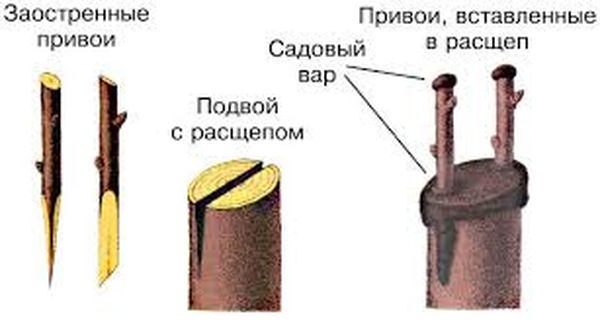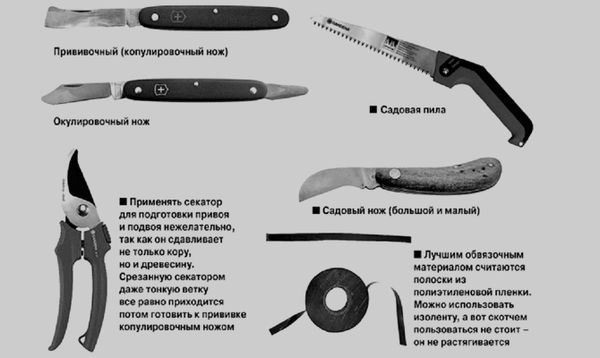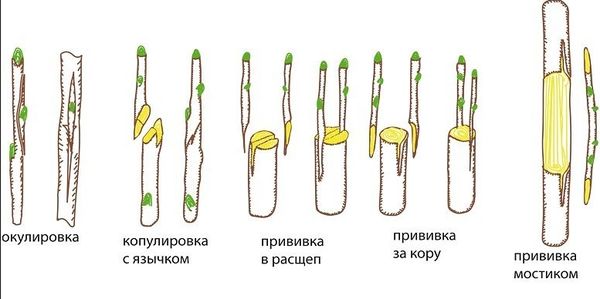3 reliable ways to graft an apple tree in the fall
Content
Optimal time for the procedure
Grafting an apple tree can significantly increase the yield of the tree, improve the taste and presentation of the fruit, and save space in the garden. Sometimes vaccination is the only way to save a fruit tree that has contracted a dangerous infectious or fungal disease.
Most gardeners try to perform the procedure in the spring, when nature wakes up and active sap flow begins. But if, due to some circumstances, it was not possible to graft the tree in the spring, you should not postpone this event for a whole year - vaccinate in the fall.
Autumn vaccination is carried out on a tight schedule. So, budding of fruit plants is carried out in August-September. By the middle of autumn, all work on the propagation of fruit crops grown in the garden should be completed.
When choosing the optimal period for this procedure, one should be guided by the weather conditions and climatic features of a particular region. To prevent the scion from freezing during the first frost, carefully insulate the junction with the stock.
Video "Grafting of fruit trees"
In this video, a specialist will talk about a simple and effective way to graft apple trees and other fruit trees.
Requirements for rootstock and scion
You need to start preparing for grafting fruit crops with the choice of scion and rootstock.
A stock is a plant to which a stalk or bud is grafted. The stalk of a varietal apple tree takes root well with a wild fruit crop. The wild tree is distinguished by its endurance and resistance to cold weather, even in severe frosts, the wild tree will not freeze.
A young apple tree seedling can be used as a stock. The age of the seedling at the time of inoculation is 2-3 years.
Many gardeners recommend grafting cuttings on old fruit crops. An adult tree is adapted to the weather conditions and climate characteristics of the growing region. Accordingly, the probability of success of the operation to reproduce the apple tree increases significantly.
As an experiment, you can try to plant an apple tree on third-party seedlings:
- varietal or wild pear;
- quince;
- viburnum;
- chokeberry or common mountain ash;
- hawthorn.
However, be prepared for unpleasant surprises in the form of poor survival rate of the scion, short term of fruiting, deterioration of the commercial qualities of the fruit.
A graft is a cutting of a varietal apple tree. The tree from which the cuttings are cut must be completely healthy.
The optimum length of the cutting is 25-30 cm, width - 1-1.3 cm. A young shoot should have 4-5 healthy buds. It is not recommended to cut branches in advance, as apple tree cuttings are not subject to long-term storage in autumn. Prepare as many cuttings as you can use in one day.
The main methods of vaccination
So, let's take a look at the basic ways how to plant an apple tree in the fall on an old tree or young seedling.
Okurilovka
The method of budding, called budding in everyday life, is considered the most common.
You can graft an apple tree with a healthy bud in spring or early autumn. The weather should be warm, but not hot.It is also not recommended to carry out budding of fruit crops in the rain or in cloudy weather.
- On a one year old seedling, select a healthy bud. You need to cut off the bud with a small layer of wood and bark.
- Choose a stock. The thickness of the scion and rootstock must be the same.
- Make a T-shaped bark incision on the rootstock. Gently push the bark apart so as not to injure the tree.
- Insert the scion into the formed incision so that the bud "looks" up.
- Secure the joint with plastic wrap.
Cleavage and semi-cleavage
Inoculation of apple trees in semi-split and split is used in the cultivation of multi-varietal fruit crops.
The split method differs from the half split grafting in that in the first variant a full longitudinal section is formed. A skeletal branch or tree trunk is cleaned of bark and a shallow depression (split) is made with a knife. A bevel-cut graft is inserted into the formed "hole" and fixed with a bandage made of plastic wrap.
On the bark
Now let's talk about how to properly graft a varietal apple tree behind the bark. An old apple tree is used as a stock. The stem branches are cut at a distance of 50–70 cm from the tree trunk. Do not forget to leave 2-3 branches for sap flow.
Make a vertical cut 4–6 cm long on the bark of the upper part of the rootstock. Try not to touch the wood. The lower part of the scion is cut obliquely. The graft is inserted behind the bark of the rootstock with an oblique cut, the grafting site is fixed with electrical tape and processed with garden varnish.
Further care
A grafted tree requires proper care. Timely watering, fertilizing the soil and protecting against pests will help the scion and rootstock grow together faster.
The approaching frost obliges the gardener to pay due attention to the insulation of the garden. The near-trunk circle is mulched with fallen leaves or coniferous branches, and the vaccination site is insulated with any breathable material. The bandage should be tight enough so that no harmful insects can sneak under it. In this case, a bandage that is too tight can squeeze the branches, interfering with the normal life of the plant. Do not forget to protect against rodents, which like to feast on the bark of fruit crops in winter.
With the arrival of spring, when the frosts have completely receded, you can loosen the bandage. During the period of active sap flow, the scion will revive and give the first shoots. The grafted seedling needs additional support and a garter of branches. A young tree can break under the weight of the shoots formed.
Look closely at the young twigs and prune, leaving the strongest shoots.
If there is a suspicion that the scion has not engrafted, carefully cut off the bandage, remove the shield or stalk. The wound formed on the trunk of the apple tree must be treated with garden varnish.




